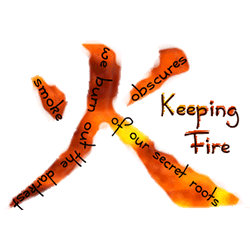The new Figurski… – blueprints for media translation
On July 9, the lab celebrated two major events relating to Richard Holeton’s hypertext novel, Figurski at Findhorn on Acid: the 20th anniversary of its publication on the Storyspace platform in 2001 on CD-ROM by Eastgate Systems, Inc. and the launch of the archival version Holeton commissioned the lab to produce. Speaking at the launch was prominent hypertext scholar […]
The Future is Yesterday
On the side of a lonely stretch of highway in a bleak part of Kansas, a man is pasting a sign on a billboard. The activity frames this episode of Season 4 of Fargo, with the phrase, “THE FUTURE is,” lingering through the storyline until it is finally punctuated at the end of the episode with […]
ELL Undergraduate Researchers Reconstitute Deena Larsen’s Kanji-Kus

“All of my kanji-kus are dead, and you can see their husks if you follow these links.”–Deena Larsen So writes Deena Larsen on her website in 2014. But this is not true anymore: Undergraduate Researchers in my lab––Kathleen Zoller, Moneca Roath, Mariah Gwin, and Andrew Nevue––led by project manager Holly Slocum, have reconstituted this intellectually […]
